Mowing and Leaf Removal – Lawns will continue to grow at least well into mid-December, albeit significantly more slowly as temperatures continue to decline. The grasses we grow in Southeastern PA are all “cool weather” grasses; they thrive in SOIL temperatures between 35 degrees and 70 degrees Fahrenheit. Lawns that are closely mown (3-3 ½”) when they go dormant will look better over the winter, will be less susceptible to catching late-falling leaves, will be much less susceptible to turf diseases (snow mold) should there be a significant period of snow cover over the winter, and will green up faster in the spring. There’s no need to mow more frequently now than every 7-10 days, but keep mowing until just before the ground freezes solid in mid-late December. As I indicated above, by the time this Newsletter is being read, the vast majority of leaves will have already fallen from deciduous trees and shrubs in our landscapes. The lingering leaves will be from oaks and some flowering pear trees. Some of these leaves will literally stay on the trees until the new buds swell next April. However, there will still be considerable blowing around of leaves from neighbors’ yards and vacant areas where collection is not done. These leaves are best managed by continuing to mow the lawns. No need to rake or otherwise collect these leaves, but do not allow them to remain on your lawns. Lawns that are clean of leaves and recently mowed when the ground freezes will look the best and perform the best throughout the winter and into next spring.
Late Fall Feeding with Lawn Depot WINTERFEAST Turf Food – After the first killing frost, the primary growth of cool weather grasses occurs below ground. Roots develop deeper and denser and crowns multiply. Above-ground, subtle greening takes place, but the fertilizer does not stimulate top growth. This is the most important feeding of the year for cool season grasses. If you haven’t fed your lawns yet this fall, feed them now with Lawn Depot WINTERFEAST. And if you fertilized earlier in the fall (as recommended), that fertilizer is still working, so hold off on your WINTERFEAST application until around Thanksgiving. Just make absolutely sure that you get the WINTERFEAST down. Next spring your lawn will be significantly greener than your neighbors. Unless, of course, they also fed their lawns with WINTERFEAST. Only available at Lawn Depot’s garden center. Click here for current store hours.
Late Fall Seeding – As soil temperatures cool, the speed of seed germination slows precipitously. By mid-November, we recommend that, when seeding is necessary (new lawns, insect damage or other repair procedures), Lawn Depot EVERGREEN 100% hybrid perennial ryegrass be used and that the seed be amended with either Penn Mulch or weed-free straw (EZ Straw) to hold moisture in the seed bed. Irrigation EVERY DAY through germination is essential. Remember to only seed at this time of year in emergency situations, and only use EVERGREEN Mix if you do seed. Although seed does not die if ungerminated in the soil over the winter, it can’t germinate next spring until soil temperatures rise into the mid-50s. Probably late April-early May. And then you’ll be interfering with any weed control (crabgrass, broadleaf) programs you may want to follow. The best times to seed are between mid-August and the end of October. Late seeding and any spring seeding should be with EVERGREEN Mix, and should only be done in emergencies.
Liming Lawns in the Late Fall – Liming is a soil conditioning activity, not a fertilizer. Lime is not absorbed by grass plants. Its sole function is to make fertilizers work better. Our soils are naturally acidic (pH = 5.5-6.0 typically). When fertilizers are applied to acidic soils some of the nutrients (N, P, K) react chemically with the acidic soil and become bound to the soil. Thus, rendering the nutrients unavailable to the grass plants. So, by regularly adding pelletized lime to lawns, we can raise the soil pH and make the fertilizers more effective. Liming can be done any time when the ground is not either snow-covered or frozen. It is best done during periods of regular rainfall (now, spring) because it will be activated more quickly. Apply pelletized lime 5 lbs./1000 sq. ft. for Cal-Turf Pro Lime (high efficiency lime) to all grassy areas of the yard once or twice a year to maintain soil pH or 12 lbs./1000 sq. ft. to raise/correct the soil pH.
